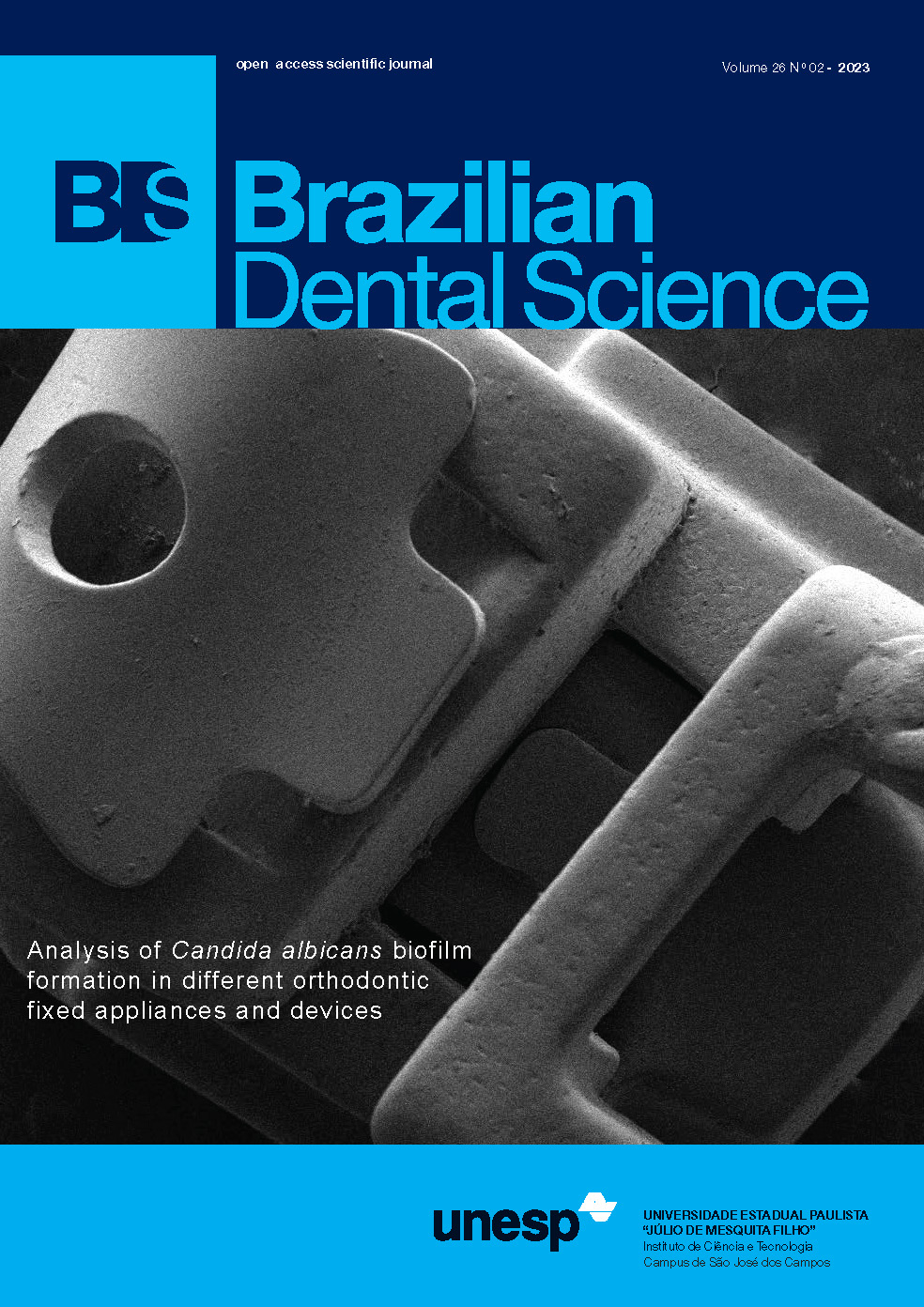The possible association between the types of soft palate and gag reflex: a preliminary study
DOI:
https://doi.org/10.4322/bds.2023.e3628Abstract
Objective: whether gag reflex, a common problem encountered during dental procedures, is associated with the different types of the soft palate has not been addressed so far. This preliminary study sought to assess the potential association between the different types of soft palate and gag reflex. Material and Methods: one hundred dental patients were recruited. The type of soft palate was determined. Subjective (self-reported) gag reflex was recorded based on many questions and past experience and on a 0-6 VAS. Objective assessment of gag reflex was done using different maneuvers where the posterior part of the tongue and the soft palate were touched by dental mirror, and by taking impression for the upper arch. The association between the types of soft palate and the subjective and objective recorded gag reflex were statistically tested. Results: there were 53 (53%), 33 (33%) and 14 (14%) of the participants with class I, class II and class III soft palate, respectively. A significant association was found between the type of the soft palate and gag reflex in response to one of the subjective items (P= 0.039), more prominent among females (P= 0.009). Concerning the objective assessment, no significant associations were found among males. Meanwhile more females with class II and class III suffered gag reflex and/or actual gagging upon taking the impression (P = 0.001). Conclusion: this study illustrated an association between the type of soft palate and gag reflex, and its severity in females (more specifically soft palate types II and III) more than in males.
KEYWORDS
Gag reflex; Soft palate; Dental materials; Prosthodontics; Restorative dentistry.
Downloads
Published
How to Cite
Issue
Section
License
Brazilian Dental Science uses the Creative Commons (CC-BY 4.0) license, thus preserving the integrity of articles in an open access environment. The journal allows the author to retain publishing rights without restrictions.
=================




























